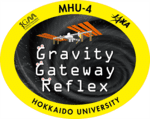Conducted the world’s first “Mission to elucidate a gateway where pathogens and immune cells are likely to enter the central nervous system using inflammatory disease model mice”. Accomplished 4 consecutive missions with 100% successful live return.
Last Updated:
June 11, 2019

After completing long-term habitation of JAXA’s 4th “Mouse habitat mission” (32 days from May 4 to June 4), which has been performed in the Japanese Experiment Module “Kibo”, the mice were accommodated in return cages and returned to the west coast of the United States by the 17th operational vehicle of the Dragon spacecraft (SpX-17). On June 5, the return cages were handed over from NASA to JAXA in the United States, and then living condition of all mice was confirmed. Detailed analysis will be performed from now on. (All dates are Japan Standard Time, JST)
Main experimental theme
“Characterization blood vessel gateway formation and molecule expression at dorsal vessels of spinal cords by gravity stimulation (Gravity Gateway Reflex)” (Principle investigator: Masaaki Murakami, Professor and Director of Institute for Genetic Medicine, Hokkaido University)
Overview
A long-term habitation of inflammatory disease model mice, into which cells inducing inflammation in the central nervous system were transferred, was conducted on the International Space Station. The long-term habitation of such inflammatory disease model mice in space, as well as live return of all of them is the world’s first achievement.
Related Links
*All times are Japan Standard Time (JST)
Comments are closed.